Discover 35 hidden attractions, cool sights, and unusual things to do in Manila (Philippines). Don't miss out on these must-see attractions: Malacañang Palace, Fort Santiago, and San Agustin Church. Also, be sure to include Manila Cathedral in your itinerary.
Below, you can find the list of the most amazing places you should visit in Manila (Metropolitan Manila).
Table of Contents
Malacañang Palace
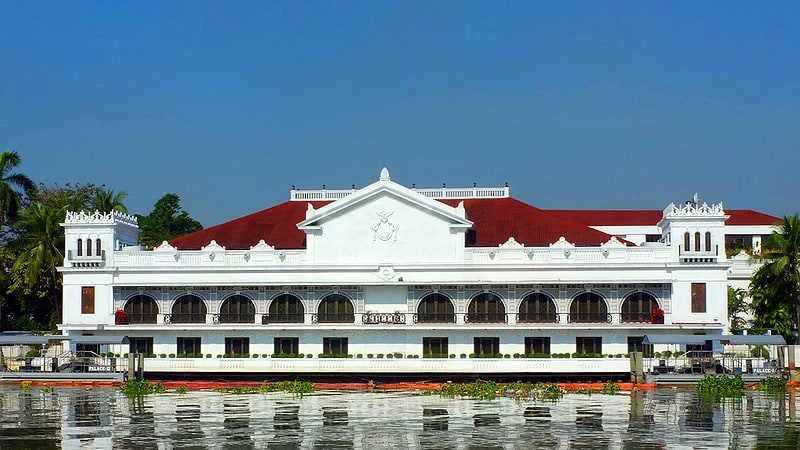
Presidential museum with guided tours. Malacañang Palace, officially known as Malacañan Palace, is the official residence and principal workplace of the president of the Philippines. It is located in the Manila district of San Miguel, and is commonly associated with Mendiola Street. The term Malacañang is often used as a metonym for the president and his advisers. The sprawling Malacañang Palace complex includes numerous mansions and office buildings designed and built largely in bahay na bato and neoclassical style. Among the presidents of the present Fifth Republic, only Gloria Macapagal Arroyo actually lived in the main palace as both office and her residence, with all others residing in nearby properties that form part of the larger palace complex. The palace has been seized several times as a result of protests starting with the People Power Revolution of 1986, the 1989 coup attempt, the 2001 Manila riots, and the EDSA III riots.
The original structure was built in 1750 by Don Luis Rocha, a Spaniard in the galleon trade, who built it as a summer house located in San Miguel, Paco, and Santa Ana along the Pasig River. The Rocha property was built of stone, described as being a relatively modest country house (although modern day Rochas say it was not small and in fact had a ballroom) with a bath house on the river and gardens, all enclosed by a stone fence. The latter was probably a nipa-roofed and bamboo-enclosed structure built on the water, where away from the gaze of passing boats. It was easily accessible from Intramuros and Binondo by boat or carriage or on horseback. It was purchased by the state in 1825 as the summer residence for the Spanish governor-general upon Colonel José Miguel Formento's death.
Following an earthquake on June 3, 1863, which destroyed the governor-general's official residence the Palacio del Gobernador in the walled city of Intramuros, Malacañan became the official seat of power of Spanish colonial rule. Use of the palace as official state residence of colonial rulers was continued after sovereignty over the islands was ceded to the United States in 1898. General Wesley Merritt was the first American governor to make use of the estate as his residence.
Since 1863, the palace has been occupied by eighteen Spanish governors-general, fourteen American military and civil governors, and later the presidents of the Philippines. The palace had been enlarged and refurbished several times since 1750; the grounds were expanded to include neighboring estates, and many buildings were demolished and constructed during the Spanish and American periods. Its posts were strengthened, roof tiles replaced with corrugated iron sheets, balconies repaired and both exterior and interior beautified. More recently, between 1978 and 1979 the palace building was drastically remodeled and extensively rebuilt by First Lady Imelda Marcos during the term of Ferdinand Marcos. Malacañang was the only major government building in Manila to survive heavy artillery bombing during the Second World War. The palace continued to be the jewel of the still fashionable district of San Miguel, spared by the war.[1]
Address: Manila, Jose Laurel Street
Fort Santiago
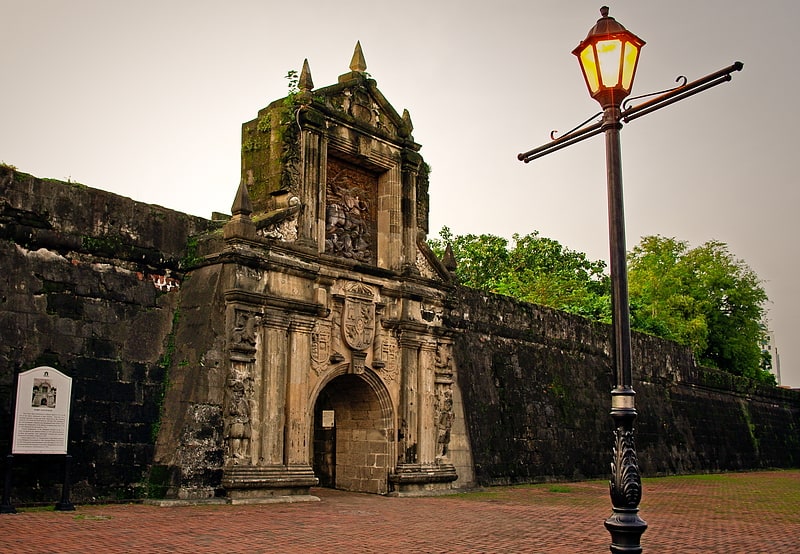
Iconic citadel and with a hero's memorial. Fort Santiago, built in 1571, is a citadel built by Spanish navigator and governor Miguel López de Legazpi for the new established city of Manila in the Philippines. The defense fortress is located in Intramuros, the walled city of Manila.
The fort is one of the most important historical sites in Manila. Several lives were lost in its prisons during the Spanish Empire and World War II. José Rizal, one of the Philippine national heroes, was imprisoned here before his execution in 1896. The Rizal Shrine museum displays memorabilia of the hero in their collection and the fort features, embedded onto the ground in bronze, his footsteps representing his final walk from his cell to the location of the actual execution.
It is only a few meters away from the Manila Cathedral and the Palacio del Gobernador (lit. Governor's Palace, currently the office of the Commission on Elections).[2]
Address: Gen Luna St, 1002 Manila
San Agustin Church
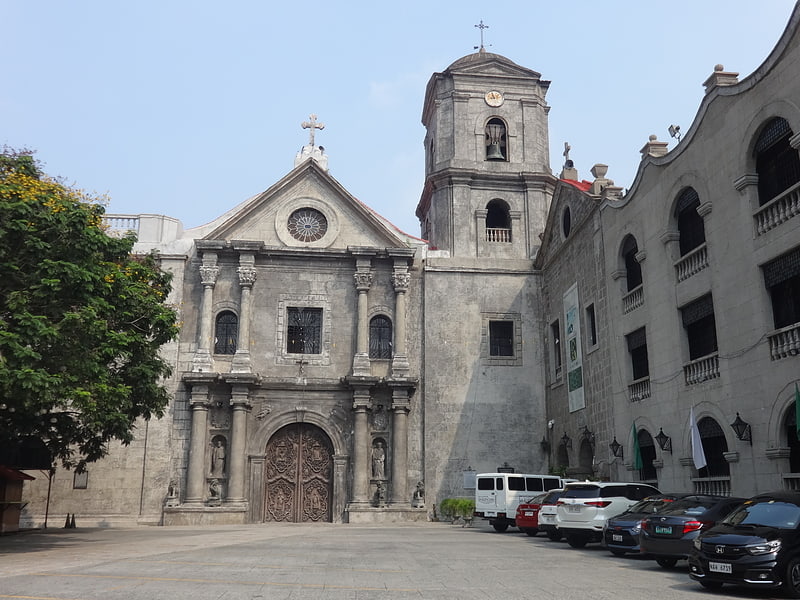
Cultural exhibits near a historic church. San Agustin Church, also known as the Archdiocesan Shrine of Our Lady of Consolation and Cincture or the Immaculate Conception Parish, is a Roman Catholic church under the auspices of the Order of St. Augustine located inside the historic walled city of Intramuros in Manila. Completed in 1607, it is the oldest stone church in the country.
In 1993, San Agustin Church was one of four Philippine churches constructed during the Spanish colonial period to be designated as a World Heritage Site by UNESCO, under the collective title Baroque Churches of the Philippines. It was named a National Historical Landmark by the Philippine government in 1976.[3]
Address: Gen Luna & Real Sts, 1002 Manila
Manila Cathedral
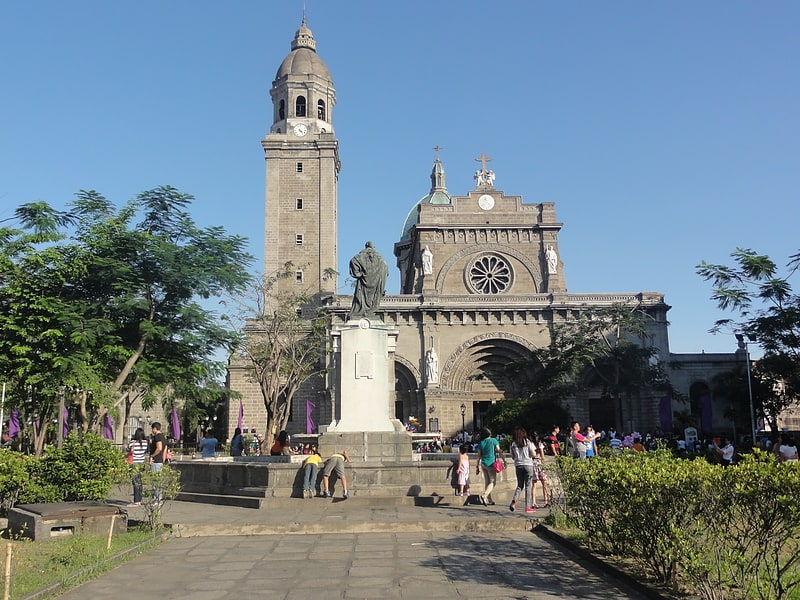
Historic basilica known for papal visits. The Minor Basilica and Metropolitan Cathedral of the Immaculate Conception, also known as the Manila Cathedral, is the cathedral of Manila and basilica located in Intramuros, the historic walled city within today's modern city of Manila, Philippines. It is dedicated to the Immaculate Conception of the Blessed Virgin Mary as the Patroness of the country. The cathedral serves as the episcopal seat of the Archbishop of Manila.
The cathedral was originally a parish church in Manila under the Archdiocese of Mexico in 1571, until it became a separate diocese on 6 February 1579 upon the issuance of the papal bull, Illius Fulti Præsido by Pope Gregory XIII. The cathedral was damaged and destroyed several times since the original structure was built in 1581 while the eighth and current structure of the cathedral was completed in 1958.
The basilica has merited a papal endorsement from Pope Gregory XIII and three apostolic visits from Pope Paul VI, Pope John Paul II and Pope Francis. On 27 April 1981, Pope John Paul II issued papal bull Quod Ipsum designating the cathedral as a minor basilica by his own Motu Proprio.[4]
Address: Cabildo cor Beaterio, 1002 Manila
Binondo Church
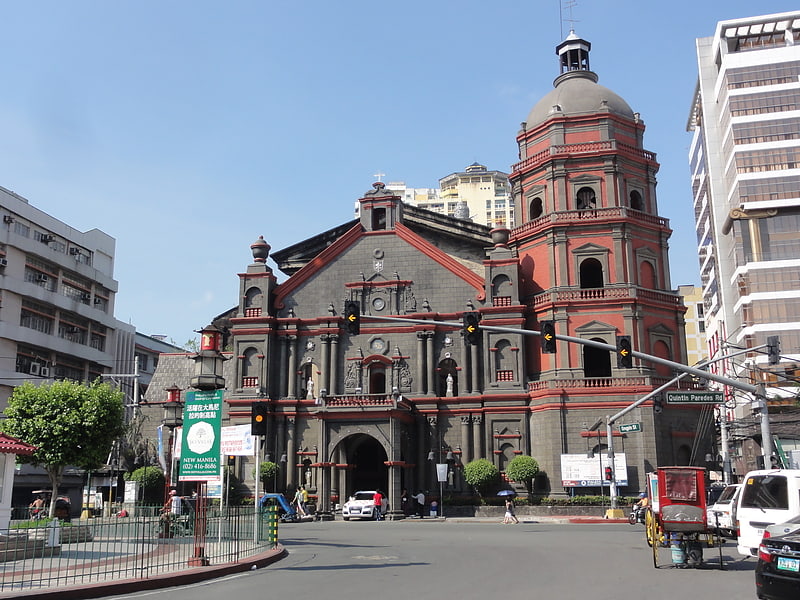
Landmark church with 16th-century tower. Binondo Church, also known as the Minor Basilica and National Shrine of Saint Lorenzo Ruiz and formerly known as Our Lady of the Most Holy Rosary Parish, is located in the District of Binondo, Manila fronting Plaza San Lorenzo Ruiz, in the Philippines. This church was founded by Dominican priests in 1596 to serve their Chinese converts to Christianity. The original building was destroyed in 1762 by British bombardment. A new granite church was completed on the same site in 1852 however it was greatly damaged during the Second World War, with only the western façade and the octagonal belfry surviving.
Saint Lorenzo Ruiz, who was born of a Chinese father and a Filipino mother, trained in this church and afterwards went as a missionary to Japan, where he and his companions were martyred for refusing to renounce Christianity. Lorenzo is the Philippines' first saint, and was canonized by Pope John Paul II in 1987. A large statue of the saint stands in front of the church.
Masses are held in Filipino, Mandarin, Hokkien, and English. As of 2021, the parish priest and rector is Rev. Fr. Andy O. Lim.[5]
Address: Paredes St. at Plaza Calderon de la Barca, Manila
Bahay Nakpil-Bautista
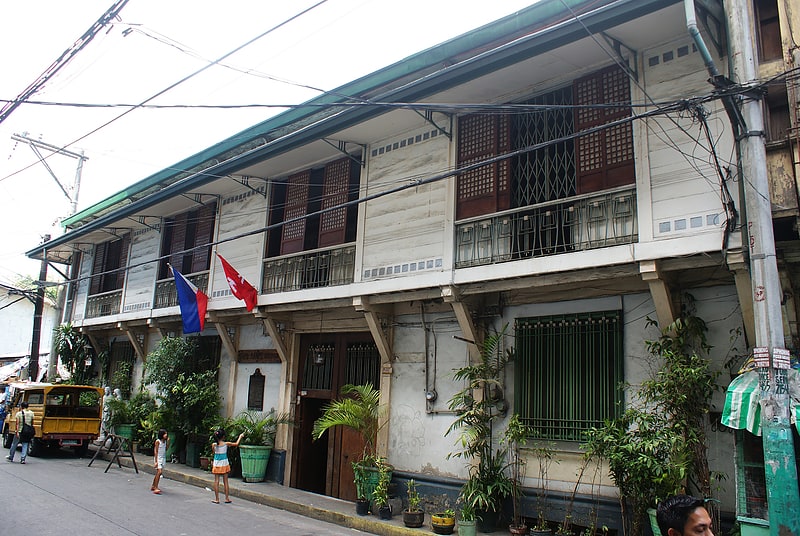
Museum in Manila, Philippines. The Nakpil-Bautista House is one of the old houses found in the district of Quiapo, Manila. It was built in 1914 by Arcadio Arellano. The two-house originally sits on two lots, having a total area of 500 square meters. The National Historical Commission of the Philippines declared the house as a cultural property on August 25, 2011. Today, the house is a museum showcasing items of the Katipunan, paintings, among others.[6]
Address: Manila, A. Bautista Street
Manila Zoo

Zoo in Manila, Philippines. The Manila Zoo, formally known as the Manila Zoological and Botanical Garden, is a 5.5-hectare zoo located in Malate, Manila, Philippines that opened on July 25, 1959.[7]
Address: M. Adriatico St, 1004 Manila
Rizal Shrine
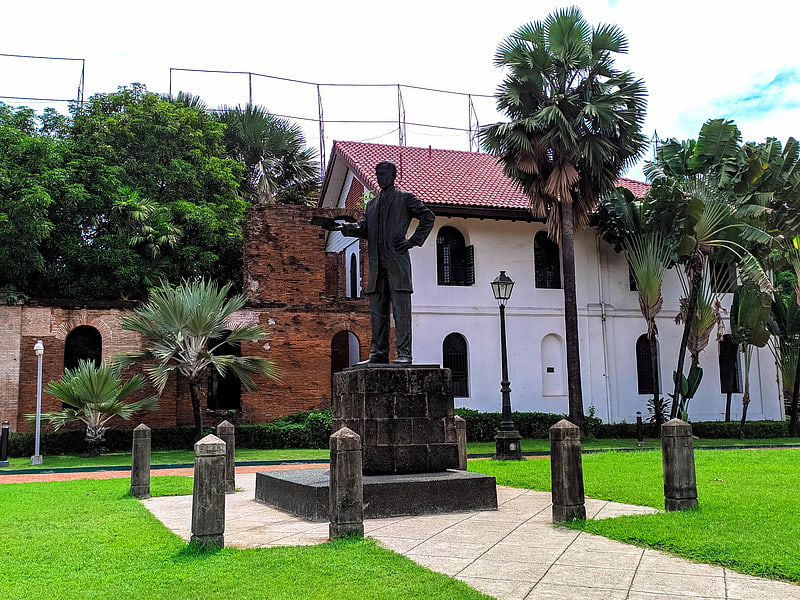
Museum in the Philippines. The Rizal Shrine, also known as the Museo ni José Rizal Fort Santiago is a museum dedicated to the lifework of José Rizal. It is located on Santa Clara Street, Fort Santiago, Intramuros, Manila, Philippines. Fort Santiago served as barracks for Spanish artillery soldiers during Spain's colonization of the islands. The museum is located in the building where Rizal spent his final night and hid his famous poem Mi último adiós in an oil lamp later given to his sister, Trinidad. The shrine is home to various memorabilia such as the shells he collected in Dapitan, books, manuscripts and artwork.
In 2014, the National Historical Commission of the Philippines renovated the museum in order to attract younger audience.[8]
Rizal Monument
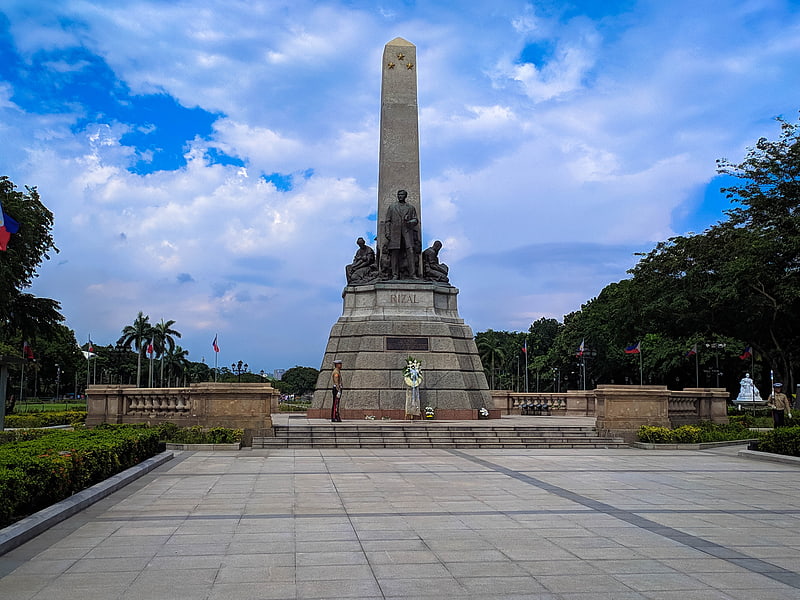
Historical landmark in Manila, Philippines. The Rizal Monument is a memorial in Rizal Park in Manila, Philippines built to commemorate the executed Filipino nationalist, José Rizal. The monument consists of a standing bronze sculpture of Rizal, with an obelisk, set on a stone base within which his remains are interred, holding his 2 famous novels "El Filibusterismo and Noli Me Tangere". A plaque on the pedestal's front reads: "To the memory of José Rizal, patriot and martyr, executed on Bagumbayan Field December Thirtieth 1896. This monument is dedicated by the people of the Philippine Islands."
The perimeter of the monument is guarded continuously by the Philippine Marine Corps’ Marine Security and Escort Group, the changing of the guard having become a daily ritual. About 100 m (330 ft) north-northwest of the monument is the exact location where Rizal was executed, marked by life-size dioramas depicting his final moments. The landmark is the most recognizable monument in Luneta. The Rizal Monument serves a meaningful national heritage for Filipinos, commemorating the heroic act of Jose Rizal to his country.
An exact replica of the Rizal Monument can be found in Madrid, Spain at the junction of Avenida de Las Islas Filipinas and Calle Santander.[9]
Avilon Zoo

Zoo in Rodriguez, Rizal, Philippines. Avilon Zoo is a 7.5-hectare zoo located in Barrio San Isidro, Rodriguez, Rizal, Philippines. It is operated by the Avilon Wildlife Conservation Foundation, which also operated the Ark Avilon Zoo in Pasig.[10]
Address: 9003 GP Sitio Gulod, San Isidro, 1860 Rodriguez
Our Lady of Montserrat Abbey
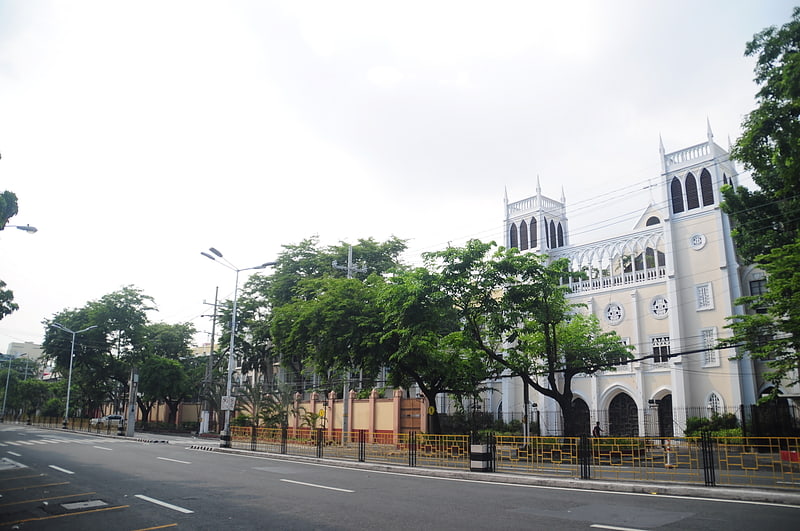
Monastery in Manila, Philippines. The Abbey of Our Lady of Montserrat, or Manila Abbey, is a Benedictine men's monastery located on Mendiola Street in Manila, the Philippines. The monastery was founded by monks from Spain in 1895, in the final years of Spanish colonial era in the Philippines and is dedicated to Our Lady of Montserrat.
The resident monks, which belong to the Philippine Pro-Province of the Subiaco Cassinese Congregation (a part of the Benedictine Confederation) also operate San Beda University on the abbey's grounds.[11]
Plaza de Roma
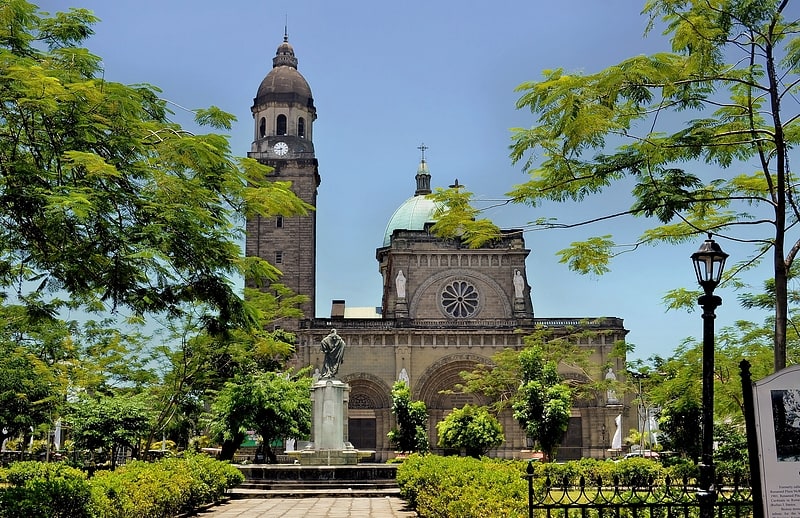
Plaza de Roma, also known as Plaza Roma, is one of three major public squares in Intramuros, Manila. It is bounded by Andres Soriano Avenue to the north, Cabildo Street to the east, Santo Tomas Street to the south, and General Antonio Luna Street to the west. The plaza is considered to be the center of Intramuros.
Plaza de Roma is also the location of the Book Stop Intramuros, a local unit of The Book Stop Project.[12]
Address: General Luna (Calle Real del Palacio) cor. Andres Soriano (Aduana), Manila
Casa Manila
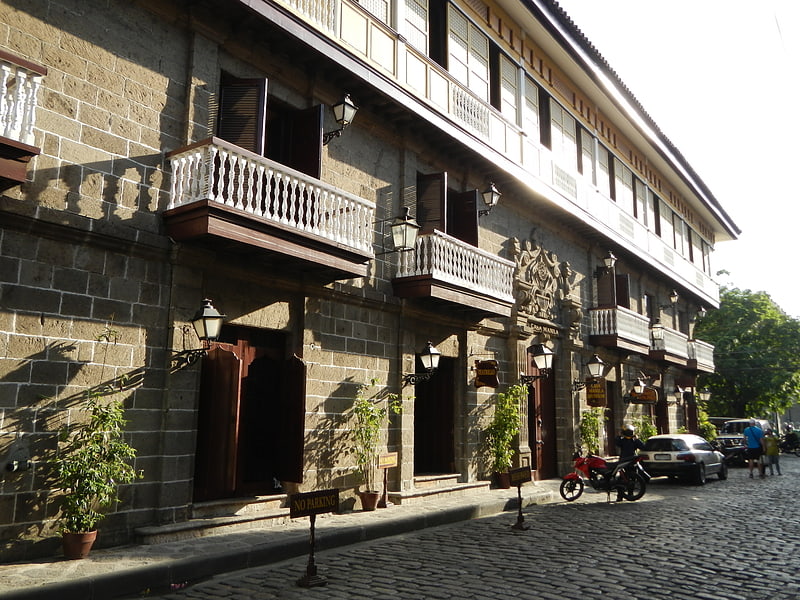
Museum in Manila, Philippines. Casa Manila is a museum in Intramuros depicting colonial lifestyle during Spanish colonization of the Philippines.
The museum is the imposing stone-and-wood structure c. 1850, one of the grand houses in Barrio San Luis (one of the four original villages of Intramuros) is located across historic San Agustin church and bounded by Calle Real, General Luna, Cabildo and Urdaneta streets. The other two are the Los Hidalgos, c. 1650 and Cuyugan Mansion, c. 1890.
Casa Manila is a copy of an 1850s San Nicolas House that was once located in Calle Jaboneros. The architect of Casa Manila was J. Ramon L. Faustmann. It was constructed by Imelda Marcos during the 1980s and modeled on Spanish colonial architecture.[13]
Address: Real St, 1002 Manila
San Sebastian Church
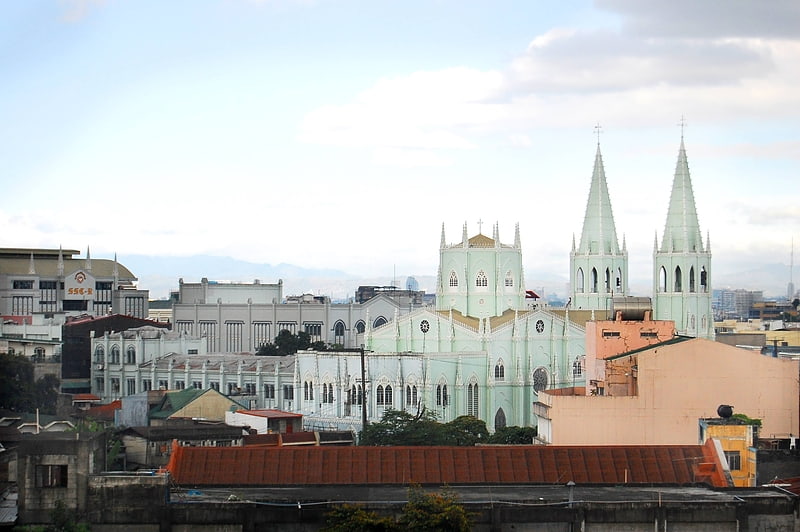
Landmark Gothic church with tall spires. The Minor Basilica of San Sebastian, better known as San Sebastian Church or San Sebastian Basilica is a minor basilica of the Roman Catholic Church in Manila, Philippines. It is the church of the Parish of San Sebastian, and also a Shrine of Nuestra Senora del Monte Carmelo, or Our Lady of Mount Carmel.
Completed in 1891, San Sebastian Church is noted for its architecture. An example of the Gothic Revival architecture in the Philippines, it is the only steel building church in the Philippines. It was designated as a National Historical Landmark in 1973 and as a National Cultural Treasure in 2011.
San Sebastian Church is under the care of the Order of Augustinian Recollects, who also operate the San Sebastian College-Recoletos adjacent to the basilica. It is located at Plaza del Carmen, at the eastern end of Recto Avenue, in Quiapo, Manila.[14]
Address: Plaza del Carmen, C.M. Recto, Manila
Manila North Cemetery
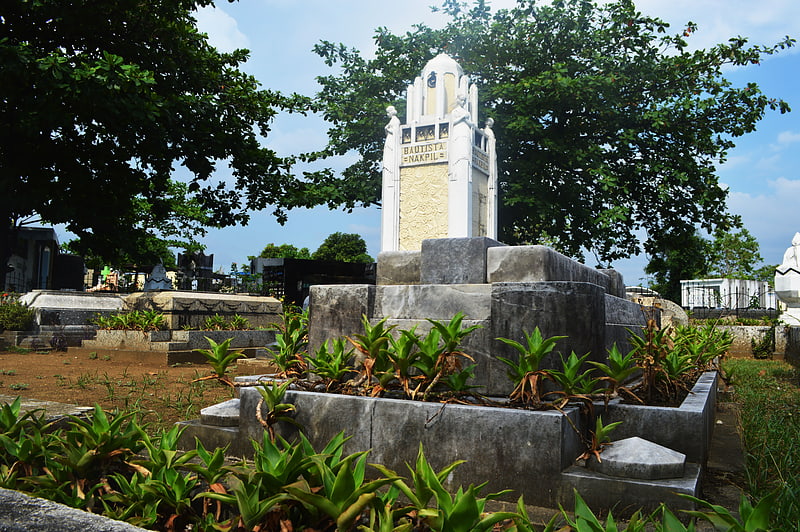
Cemetery in Manila, Philippines. The Manila North Cemetery is one of the oldest cemeteries in Metro Manila, Philippines. The cemetery is owned by and located in the City of Manila, the national capital, and is one of the largest in the metropolis at 54 hectares. It is located alongside Andrés Bonifacio Avenue and borders two other important cemeteries: the La Loma Cemetery and the Manila Chinese Cemetery. Numerous impoverished families notably inhabit some of the mausoleums.[15]
Mabini Shrine

Historical landmark in Manila, Philippines. The Apolinario Mabini Shrine is a historic site in Santa Mesa, Manila, Philippines. It is noted for being the residence of Filipino military leader Apolinario Mabini who figured in the Philippine Revolution. Originally situated along the Nagtahan River, the strucure was moved to the Polytechnic University of the Philippines main campus in Santa Mesa, Manila in the mid-2000s.[16]
Santa Cruz Church
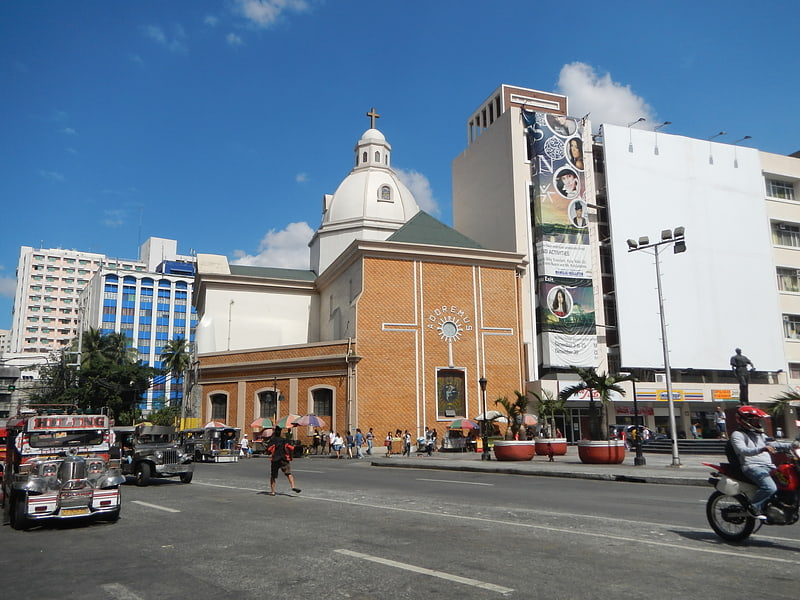
Catholic church in Manila, Philippines. The Our Lady of the Pillar Parish Church, commonly known as the Santa Cruz Church and also designated as the Archdiocesan Shrine of the Blessed Sacrament, is a baroque Roman Catholic parish church in the district of Santa Cruz, Manila, Philippines. It was built when the arrabal of Santa Cruz was established by the Jesuits in the early 17th century. The church had undergone many repairs and reconstruction, with the last reconstruction done in the 1950s. It is the first Mission and Mother house of Filipino Sacramentinos, making it as the center of Congregation Activities and events
The church façade is topped with a statue of Our Lady of the Pillar, the patroness of the church, whose feast is held every 3rd Sunday of October. On 7 December 2017 Pope Francis granted the Canonical coronation of the venerated image. The current parish priest is Fr. Rudsend P. Paragas, SSS.
On June 3, 2018, as part of the Church-wide celebrations of Corpus Christi, it was officially raised to an Archdiocesan Shrine by the decree of the Archbishop of Manila, Luis Antonio Cardinal Tagle, in the Archdiocese-wide holiday mass held in the church.[17]
Address: Plaza Santa Cruz, 2004 Manila
National Museum of Anthropology
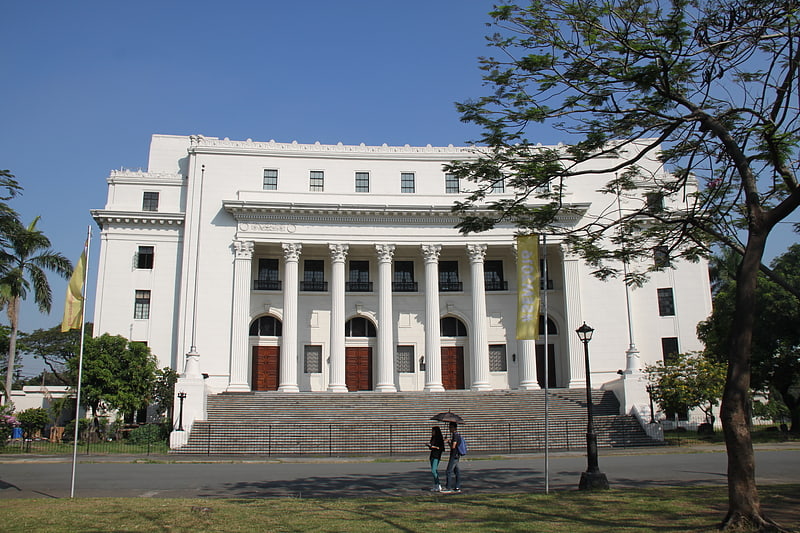
Museum in Manila, Philippines. The National Museum of Anthropology, formerly known as the Museum of the Filipino People, is a component museum of the National Museum of the Philippines which houses Ethnological and Archaeological exhibitions. It is located in the Agrifina Circle, Rizal Park, Manila adjacent to the National Museum of Fine Arts building.
Built c.1916-1918 from a neoclassical design by Canadian-American architect Ralph Harrington Doane when he was consulting architect to the Philippine government, the building formerly housed the Department of Finance. It also houses the wreck of the San Diego, ancient artifacts, and zoology divisions.[18]
Address: Finance Road, Manila
Quiapo Church
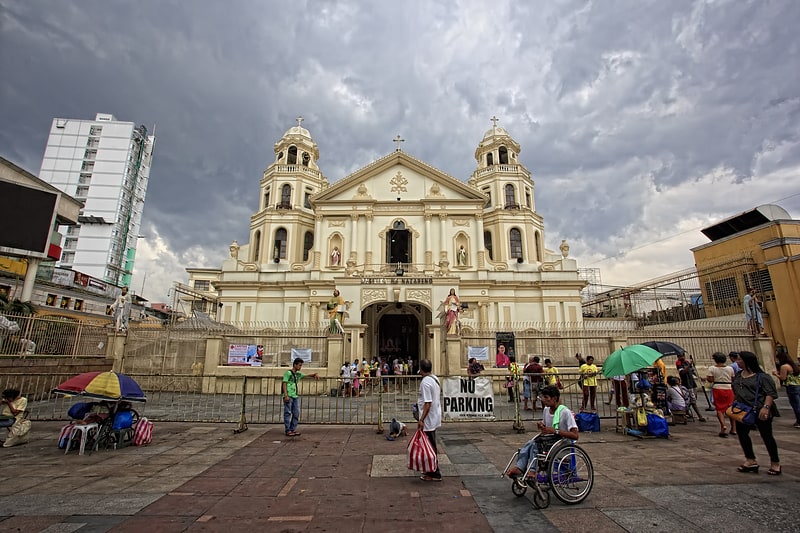
Parish with a venerated Jesus statue. The Minor Basilica of the Black Nazarene, known canonically as the Parish of Saint John the Baptist and also known as Quiapo Church, is a prominent basilica in the district of Quiapo in the city of Manila, Philippines. The basilica is famous home for the Black Nazarene, a dark statue of Jesus Christ said to be miraculous. The basilica is under the jurisdiction of the Archdiocese of Manila and its current rector is Rev. Msgr. Hernando M. Coronel.[19]
Address: Quezon Blvd, Plaza Miranda, 1014 Manila
Bonifacio Shrine
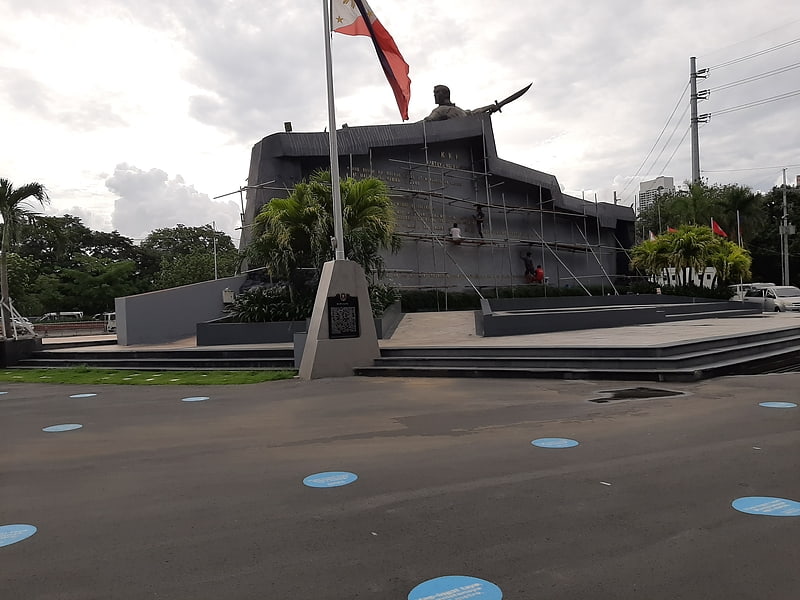
Historical landmark in Manila, Philippines. The Bonifacio Shrine, also known as the Kartilya ng Katipunan or Heroes Park, is a public park and plaza in Ermita, Manila, Philippines located just north of the Manila City Hall and south of Mehan Garden and Liwasang Bonifacio. Its centerpiece is the monument to Filipino revolutionary Andrés Bonifacio and the Philippine Revolution fronting Padre Burgos Avenue.[20]
Address: Padre Burgos Avenue, Manila
Historic houses in Santa Ana
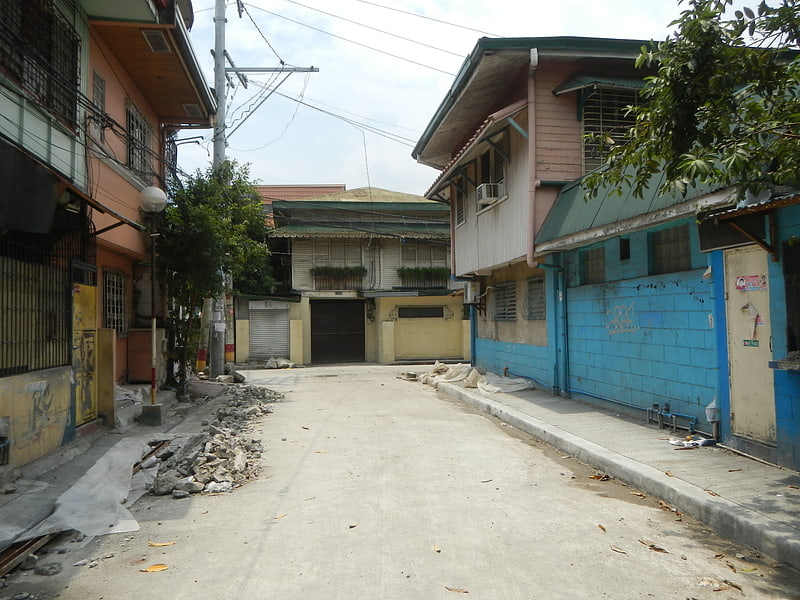
This is a list of historic houses in Santa Ana, Manila, the Philippines.
Santa Ana is the only district in Manila which was spared from destruction during World War II. Civilians fleeing other parts of Manila sought refuge in this district during the war. Thus, many ancestral houses are still standing up to the present time. Dubbed as the "Forbes Park of Manila", some houses were owned by prominent personalities and wealthy families.[21]
Address: New Panaderos, Manila
Rizal Park Open Air Auditorium
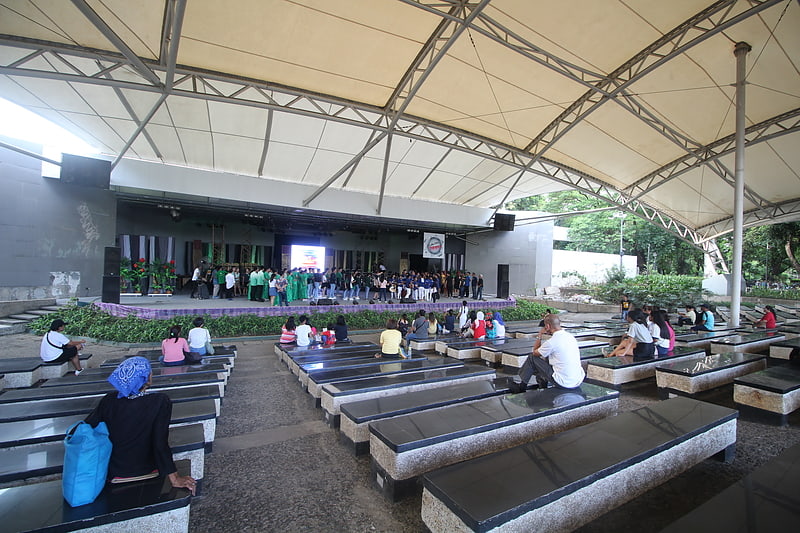
The Rizal Park Open-Air Auditorium is a covered amphitheater situated within the Rizal Park in Manila, Philippines which serves as a venue for concerts and other events.[22]
Jones Bridge
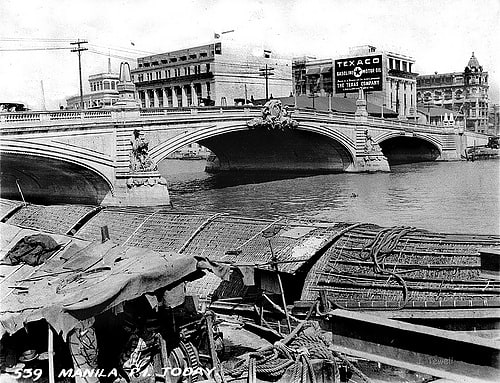
Arch bridge in Manila, Philippines. The William A. Jones Memorial Bridge, commonly known as the Jones Bridge, is an arched girder bridge that spans the Pasig River in the City of Manila, Philippines. It is named after the United States legislator William Atkinson Jones, who served as the chairman of the U.S. Insular Affairs House Committee which had previously exercised jurisdiction over the Philippines and the principal author of the Jones Law that gave the country legislative autonomy from the United States. Built to replace the historic Puente de España in the 1910s, the bridge connects Quintin Paredes Road at the Binondo district to Padre Burgos Avenue at the Ermita district.
Originally designed by Filipino architect Juan M. Arellano using French Neoclassical architecture, the first incarnation of the bridge features three arches resting on two heavy piers, adorned by faux-stone and concrete ornaments, as well as four sculptures on concrete plinths allegorically representing motherhood and nationhood. The original bridge was destroyed during the World War II by retreating Japanese troops and was reconstructed in 1946 by the U.S. and Philippine public works. The reconstructed bridge retained the three arches and two piers but removed all of the ornaments. The bridge was first partially restored in 1998. In 2019, the City Government of Manila began a rehabilitation project to "restore" the Jones Bridge to its near-original design using Beaux-Arts architecture similar to that of Pont Alexandre III in Paris and the return of all four La Madre Filipina sculptures.[23]
Kalayaan Hall
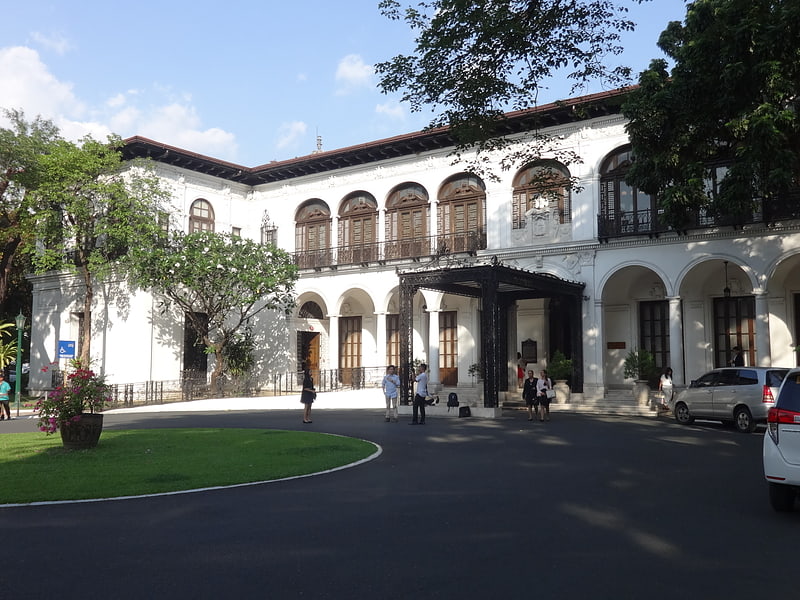
Building in Manila, Philippines. The Kalayaan Hall is a government building within the Malacañang Palace complex in Manila, Philippines. It houses the Presidential Museum and Library.[24]
Address: Dr. Jose P. Laurel, Sr, Manila
Baluarte de San Andres
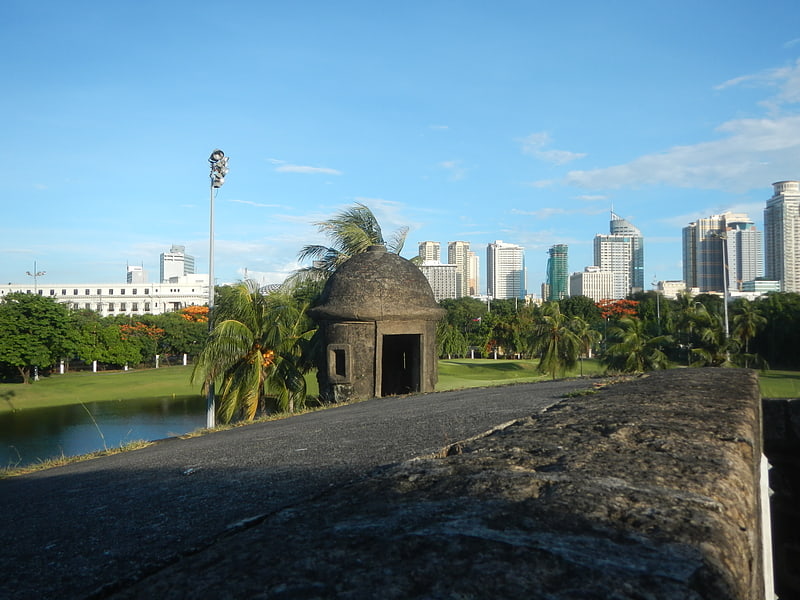
Historical landmark in Manila, Philippines. The Baluarte de San Andres is a bastion in Intramuros, which is a part of the Spanish colonial fortification in the historic Walled City. It was built in 1603 to protect the Puerto Real and the southeastern part of Intramuros. It was also known as Baluarte De San Nicolas because it was located just in front of the Iglesia de San Nicolas de Tolentino, which is now the site of the present-day Manila Bulletin Building.[25]
Museo Pambata
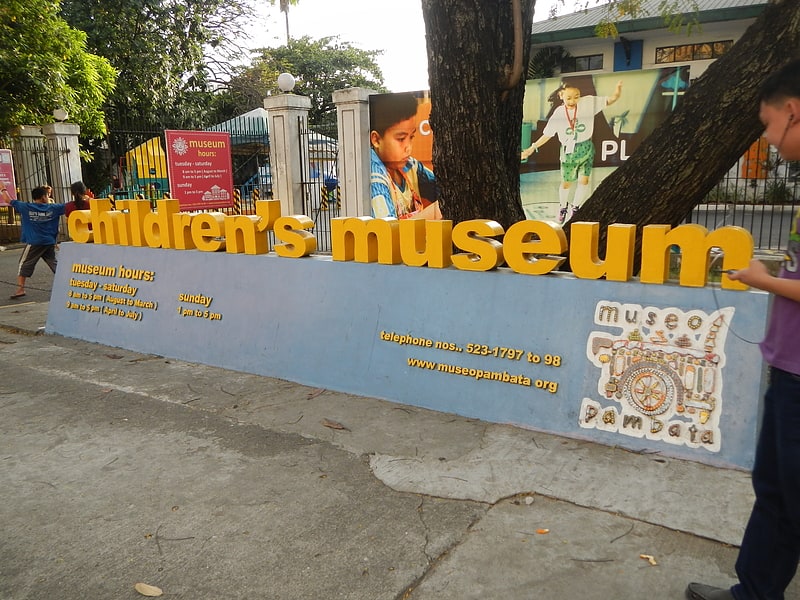
Museum in Manila, Philippines. The Museo Pambata is a children's museum in the Ermita district of Manila, near Rizal Park, in the Philippines. It is located in the former Elks Club Building, built in 1910, along Roxas Boulevard at the corner of South Drive.[26]
Address: Roxas Boulevard, Manila
Metropolitan Museum of Manila
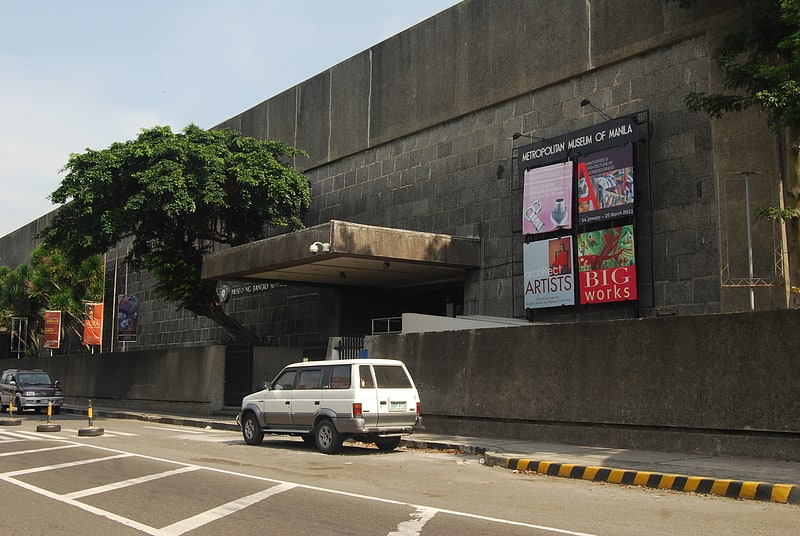
Museum in Manila, Philippines. The Metropolitan Museum of Manila is one of the major museums in the city located within the Bangko Sentral ng Pilipinas Complex along Roxas Boulevard in the Malate district of Manila, the Philippines. It bills itself as the country's premier museum for modern and contemporary visual arts by local and international artists.
Established in 1976, the Met initially exhibited international artists to expose Filipinos to contemporary visual works in other cultures. By 1986, its focus shifted to local works and extend its reach to more common people by offering bilingual exhibition texts and developing several outreach educational programs like workshops and symposia, thereby promoting local pride and identity. The museum offers free admission on Tuesdays. Partly subsidized by the Bangko Sentral ng Pilipinas, the administration of the museum was entrusted to the Metropolitan Museum of Manila Foundation in 1979.
The museum's three floors of galleries house a collection of art and historical artifacts loaned by the BSP such as pre-Hispanic goldwork and pottery, religious artwork as well as some artworks by Félix Resurrección Hidalgo. The rest of the museum is dedicated to Philippine contemporary works by various Filipino artists.[27]
Address: Roxas Blvd., Manila
Plaza San Lorenzo Ruiz

Park in Manila, Philippines. Plaza San Lorenzo Ruiz or Plaza Lorenzo Ruiz is a major public square in Binondo, Manila, bounded by Quintin Paredes Street to the east and Juan Luna Street to the west, parallel to the Estero de Binondo. It is the plaza that fronts the Minor Basilica of San Lorenzo Ruiz, one of the main churches of the City of Manila, and is considered the center of Binondo as a whole.
Originally called the Plaza de Binondo, and then Plaza Carlos IV after Charles IV of Spain, the plaza was eventually renamed Plaza Calderón de la Barca (often shortened to Plaza Calderón), after the famous Spanish playwright. It is believed that the plaza may have been renamed after Calderón either by the then-sitting Governor-General, or by the Dominican friars who were at the time running the Binondo Church, who had adored his works. The plaza was renamed after Lorenzo Ruiz, one of the Martyrs of Japan and the protomartyr of the Philippines, on September 12, 1981, by virtue of Batas Pambansa Blg. 133.[28]
Address: Plaza Lorenzo Ruiz, Manila
Manila City Hall

Sizable, historic government building. The Manila City Hall is the official seat of government of the City of Manila, located in the historic center of Ermita, Manila. It is where the Mayor of Manila holds office and the chambers of the Manila City Council is located. It was originally intended to be a part of a national government center envisioned by Daniel Burnham in the 1900s. Although the dream plan was not fully implemented, some buildings for the proposed government center were constructed, including the Old Legislative Building, and the Agriculture and Finance Buildings.[29]
Plaza Miranda
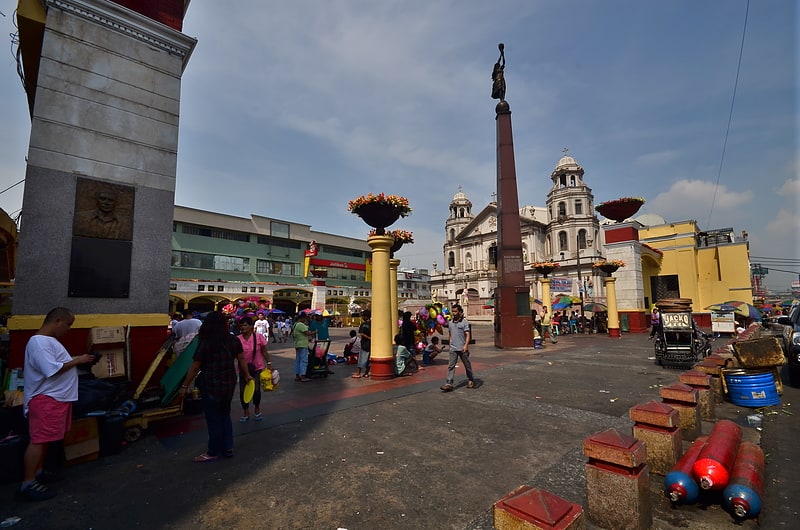
City park in Manila, Philippines. Plaza Miranda is a public square bounded by Quezon Boulevard, Hidalgo Street and Evangelista Street in Quiapo, Manila. It is the plaza which fronts the Minor Basilica of the Black Nazarene, one of the main churches of the City of Manila, and is considered as the center of Quiapo as a whole. Inaugurated in its current form by Mayor Arsenio Lacson in 1961, it is named after José Sandino y Miranda, who served as the Philippines' Secretary of the Treasury between 1833 and 1854.
Regarded as the center of Philippine political discourse prior to the imposition of martial law in 1972, the plaza was the site of the 1971 Plaza Miranda bombing, where two grenades were launched at a political rally of the Liberal Party, killing nine people. It later became the venue of the Movement of Concerned Citizens for Civil Liberties (MCCCL) rally led by Sen. Jose W. Diokno on September 21, 1972, where 50,000 people gathered together to protest the impending martial law declaration of the Marcos dictatorship. Martial law was quickly made official hours after the event. It underwent a ₱49 million renovation in 2000 after decades of neglect as a result of Manila's urban decay in the 1970s and 1980s, giving it a more modern design despite protests from various historical groups and cultural experts, with a monument erected to commemorate bombing victims and additional architectural elements installed. Currently, Plaza Miranda serves as a freedom park, where assemblies and protests may be held without needing a permit from local authorities, and with thousands of people crossing through it every day, it is considered to be Manila's version of Times Square.
Despite fronting the Quiapo Church, Plaza Miranda and the streets surrounding it is known as a center for fortune-telling and the sale of lucky charms and amulets. Most fortune tellers who practice around Plaza Miranda claim that they are able to draw their ability to tell fortunes from their devotion to the Black Nazarene (the patron of the Quiapo Church) despite Catholic Church doctrine deploring the practice.[30]
Address: Quezon Boulevard, Manila
Plaza Olivia Salamanca
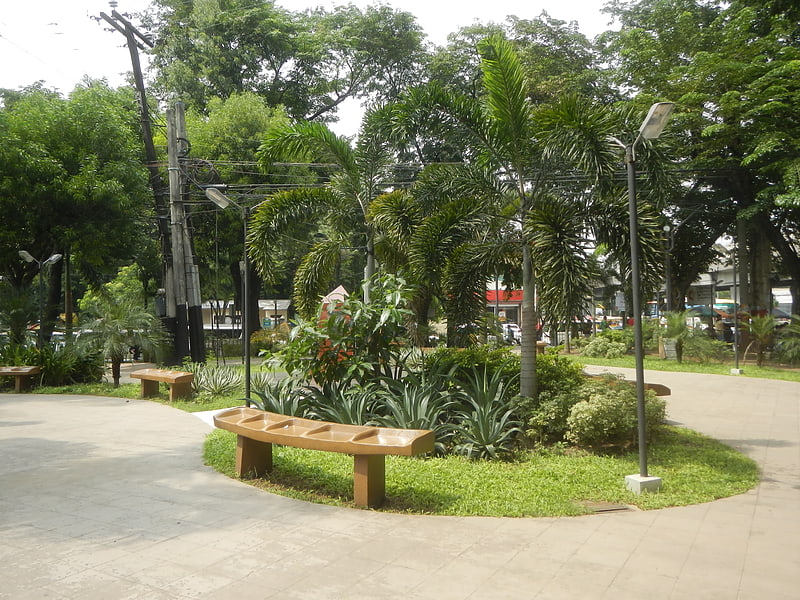
Plaza Olivia Salamanca, also known simply as Plaza Salamanca, is a public square in Ermita, Manila, bounded by Taft Avenue to the east, Teodoro M. Kalaw Avenue to the north and General Luna Street to the west. It is dedicated to Olivia Salamanca, one of the Philippines' first female physicians, with a historical marker dedicated to her being installed in 1955.
Unlike other plazas in the City of Manila, Plaza Olivia Salamanca also falls under the jurisdiction of the National Parks Development Committee, the agency responsible for maintaining the neighboring Rizal Park.[31]
Book Stop Intramuros
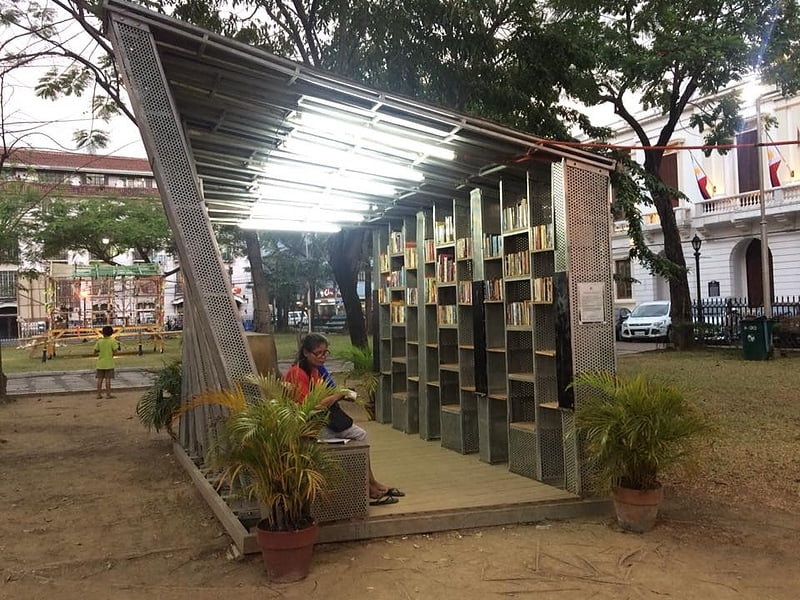
The Book Stop Intramuros is a pop-up library located in Plaza Roma, Intramuros, Manila. The unit was designed and conceptualized by William Ti and commissioned in 2016 by the WTA Architecture + Design Studio. In June 2017, the management and ownership of the Book Stop Intramuros was transferred to the Intramuros Administration.
The Book Stop Intramuros is a component of WTA's The Book Stop Project Network which explores how libraries need to evolve, attract and engage contemporary users, and promote reading for the younger generations.[32]
Santa Ana Church
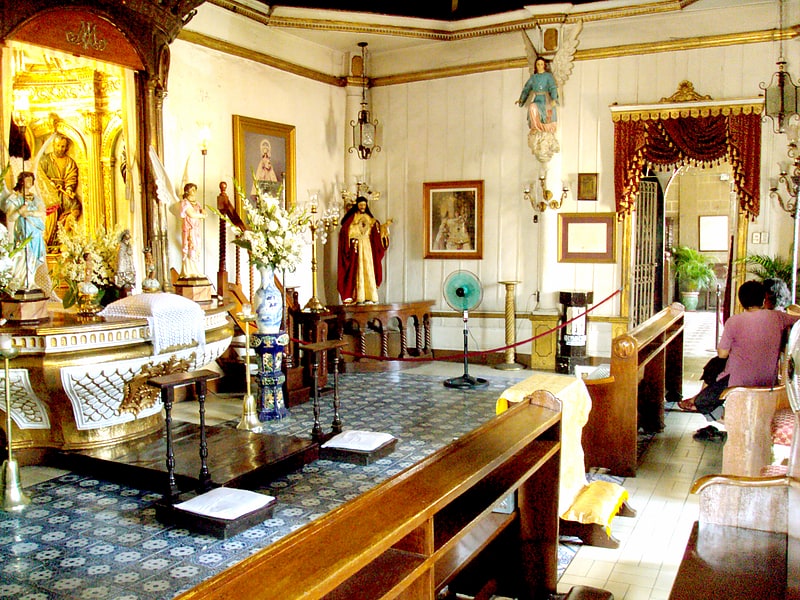
Church. The Parish of Our Lady of the Abandoned, also known as the Santa Ana Church and newly declared as the National Shrine of Our Lady of the Abandoned, is a Spanish colonial period church located in the district of Santa Ana in Manila, Philippines. The parish was established by the Franciscan missionaries in 1578 under the patronage of Saint Anne. The present stone church was constructed by Father Vicente Inglés, OFM from 1720 to 1725 and was dedicated to its present patron, the Our Lady of the Abandoned. The revered image of its patron was made in Valencia, Spain in 1713 and arrived in the Philippines in 1717.
The church houses two National Cultural Treasures declared by the National Museum of the Philippines: the Santa Ana Site Museum located in the convent patio and the Camarín de la Virgen (or the Dressing Room of the Virgin).
The elevation to National Shrine was declared last January 25, 2020 during the 120th Plenary Assembly of the Catholic Bishops Conference of the Philippines. The conferment of the title to the parish church will be on June 20, 2020 (tentatively).[33]
Address: Pedro Gil, Manila
Obando Church
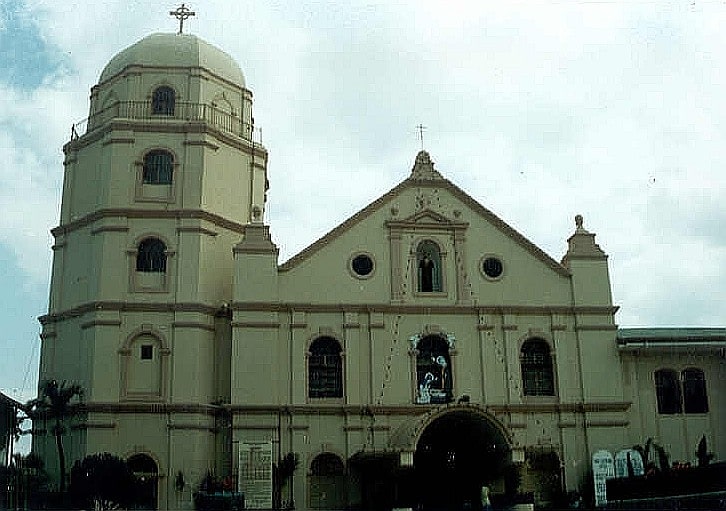
Catholic church in Obando, Bulacan, Philippines. The Parish of San Pascual Baylon and National Shrine of Nuestra Señora Inmaculada Concepcion de Salambao, also known as Obando Church, is a Roman Catholic church located in the municipality of Obando in the province of Bulacan, Philippines. Founded by Franciscan missionaries, under the Spanish Empire, it is the venue of the three-day Obando Fertility Rites held annually in honor of three patron saints, namely: St. Pascual Baylon, St. Claire of Assisi and Our Lady of Salambao, a celebration that was mentioned by Jose Rizal, the Philippine national hero, in the pages of his Spanish-language novel, the Noli Me Tangere. During the month of May, parishioners and other devotees perform the three-day Obando Dance inside the church, followed by a street procession.[34]
Address: JP Rizal St., Pag-asa, Manila (Valenzuela District 1)
San Ignacio Church
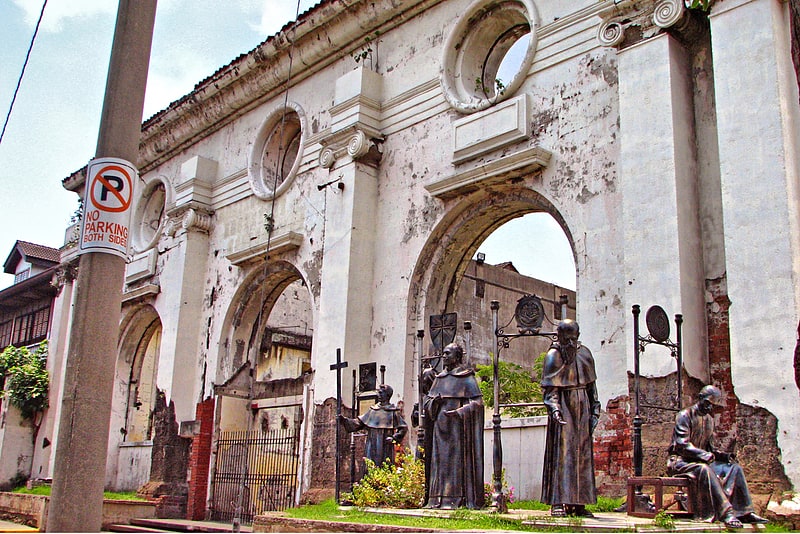
Church building in Manila, Philippines. San Ignacio Church in Intramuros, Manila, Philippines, was designed for the Jesuits by architect Félix Roxas, Sr. and completed in 1899. It was known as their "Golden Dream" but was destroyed during World War II. Its interiors, embellished with carvings, had been designed by Isabelo Tampinco.
The church building is currently being reconstructed, along with its adjoining Casa Misión Convent, as the Museo de Intramuros.[35]
Address: Arzobispo cor. Anda, Manila